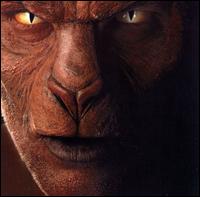
True Colors is the second studio album by American singer Cyndi Lauper, released on September 16, 1986, by Portrait Records. The album spawned several commercially successful singles as "True Colors", "Change of Heart", and "What's Going On" reached the top 20 of the Billboard Hot 100, with the first two charting within the top five. The album was produced by Lauper herself together with Lennie Petze.
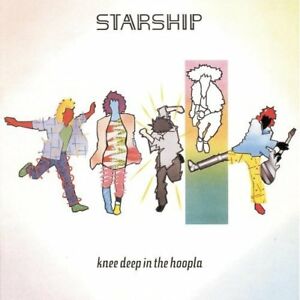
Knee Deep in the Hoopla is the debut studio album by American AOR band Starship, the succeeding musical project to Jefferson Starship. It was released on September 10, 1985, through record label Grunt.

"Eye of the Tiger" is a song by American rock band Survivor. It was released as a single from their third album of the same name and was also the theme song for the 1982 film Rocky III, which was released a day before the single. The song was written by Survivor guitarist Frankie Sullivan and keyboardist Jim Peterik, and it was recorded at the request of Rocky III star, writer, and director Sylvester Stallone, after Queen denied him permission to use "Another One Bites the Dust", the song Stallone intended as the Rocky III theme. The version of the song that appears in the film is the demo version of the song. The film version also contained tiger growls, which did not appear on the album version. It features original Survivor singer Dave Bickler on lead vocals. The song is also the title song to the 1986 film of the same name. "Eye of the Tiger" is written in the key of C minor.

Centerfield is the third solo studio album by musician John Fogerty. Released in 1985, it spawned the hit singles "The Old Man Down the Road", "Rock and Roll Girls" and the title track "Centerfield". This was Fogerty's first album in nine years; After the decision not to release his Hoodoo album, Fogerty decided to take a long break from the music business because of legal battles with his record company. In the meantime, Fogerty's recording contract with Asylum Records was reassigned to co-owner Warner Bros. Records so this album was the first released on the Warner Bros. label.

I Stand Alone is the third English-language solo studio album, and tenth overall, by Swedish singer and ABBA member Agnetha Fältskog. Released on 9 November 1987, the album was produced by Peter Cetera and would be her last for 17 years.
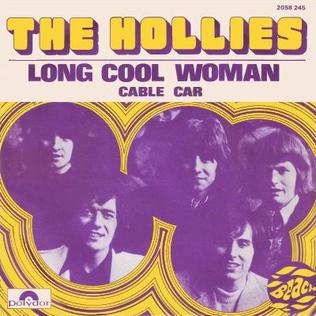
"Long Cool Woman in a Black Dress" is a song written by Allan Clarke, Roger Cook, and Roger Greenaway and performed by the British rock group The Hollies. Originally appearing on the album Distant Light, it was released as a single on 17 April 1972, selling 2 million copies worldwide, including 1.5 million in the United States. It reached No. 2 on the Billboard Hot 100 in September 1972 for two weeks, behind Gilbert O'Sullivan's "Alone Again (Naturally)". Billboard ranked it as the No. 24 song for 1972.

"Proud Mary" is a song written by John Fogerty and first recorded by his band Creedence Clearwater Revival. It was released by Fantasy Records as a single from the band's second studio album, Bayou Country, which was issued by the same record company and is generally considered to have been released in early January 1969, although one source states that it came out just before Christmas 1968. The song became a major hit in the United States, peaking at No. 2 on the Billboard Hot 100 in March 1969, the first of five singles to peak at No. 2 for the group.

Blind Before I Stop is the fifth studio album by American singer Meat Loaf, released in September 1986. The album was produced in Germany by Frank Farian and was the first to fully embrace the '80s sound. Critics were concerned about the album missing the characteristic Steinman-influenced sound by incorporating synth chords and samples. According to Meat Loaf's 1998 autobiography, he would have preferred to wait to work with more Steinman material, but his contractual obligations with Arista required him to complete two more albums by the end of the 1980s, including this album and a live album. Despite that Meat Loaf called Farian the best producer in a 2021 Farian special

Guilty is the twenty-second studio album by American singer Barbra Streisand released on September 23, 1980, by Columbia Records. It was produced by Barry Gibb of the Bee Gees and his group's regular production team of Albhy Galuten and Karl Richardson.

Grease: The Original Soundtrack from the Motion Picture is the original motion picture soundtrack for the 1978 film Grease. It was originally released by RSO Records and subsequently re-issued by Polydor Records between 1984 and 1991. It has sold over 30 million copies worldwide, making it one of the best-selling albums of all time, also ranking amongst the biggest selling soundtrack albums of all time. The song "You're the One That I Want" was a US and UK No. 1 for stars John Travolta and Olivia Newton-John.
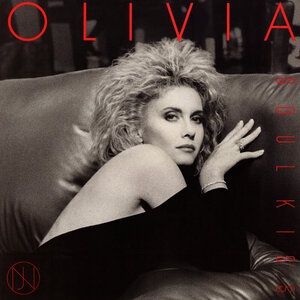
Soul Kiss is the twelfth studio album by English-Australian singer Olivia Newton-John, released on 25 October 1985 by Mercury Records in Europe, by Festival Records in Australia, and by MCA Records in the United States. It reached No. 11 on the Australian Kent Music Report Albums Chart and the No. 29 on the United States Billboard 200. The album was produced by long-time associate John Farrar, who also co-wrote four tracks; the cover art features photography of Newton-John by Helmut Newton and Herb Ritts.

Revival is the seventh solo studio album by American roots rock singer-songwriter/guitarist John Fogerty. Released in 2007, it was his first new album in three years, and also his third album since rejoining Fantasy Records. The album was released on October 2, 2007.

Blue Moon Swamp is the fifth solo studio album by American singer/songwriter John Fogerty, released on May 20, 1997. Guest musicians, the Lonesome River Band, were invited to join in on backing vocals on "Southern Streamline" and "Rambunctious Boy". Other vocal backing was provided by The Waters on "Blueboy" and The Fairfield Four on "A Hundred and Ten in the Shade". Luis Conte accompanied on select songs as a guest percussionist. In 1998, Blue Moon Swamp won Best Rock Album at the 40th Grammy Awards. The track "Blueboy" was nominated for Best Male Rock Vocal Performance.

Premonition is the first live album released by John Fogerty as a solo artist. He performs many hits by his earlier band, Creedence Clearwater Revival, as well as songs composed as a solo artist. It was recorded with a live audience at Warner Bros. Studios Stage 15 on December 12 & 13th, 1997, and is available on CD and DVD.
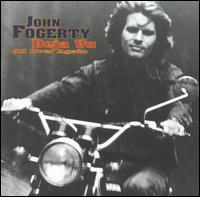
Deja Vu All Over Again is the sixth solo studio album by John Fogerty. It was released in 2004, seven years after his previous studio album Blue Moon Swamp. Originally issued by DreamWorks Records, it was reissued by Geffen Records after it absorbed DreamWorks.

"I'm Your Boogie Man" is a song written and produced by Harry Wayne Casey and Richard Finch, and performed by Casey's band KC and the Sunshine Band, from their fourth album Part 3 (1976).

"Have You Ever Seen the Rain?" is a song written by John Fogerty and released as a single in 1971 from the album Pendulum (1970) by roots rock group Creedence Clearwater Revival. The song charted highest in Canada, reaching number 1 on the RPM 100 national singles chart in March 1971. In the U.S., in the same year it peaked at number 8 on the Billboard Hot 100 singles chart. On Cash Box pop chart, it peaked at number 3. In the UK, it reached number 36. It was the group's eighth gold-selling single.

"Green River" is a song by American rock band Creedence Clearwater Revival. It was written by John Fogerty and released as a single in July 1969, one month before the album of the same name was released. "Green River" peaked at number two for one week, behind "Sugar, Sugar" by The Archies, and was ranked by Billboard as the No. 31 song of 1969.

The Blue Ridge Rangers Rides Again is the eighth solo studio album by American roots rock singer-songwriter and guitarist John Fogerty, first released on September 1, 2009, on Fogerty's own label, Fortunate Son Records and distributed by Verve Forecast Records. The apparent grammatical error in the title of the album is a play on the fact that the original Blue Ridge Rangers consisted entirely of Fogerty singing all the vocals and playing all the instruments by himself.

Wrote a Song for Everyone is the ninth solo studio album by John Fogerty, released on May 28, 2013 in the United States. The album is a collection of Creedence Clearwater Revival classics and deep tracks from his canon of hits as well as some brand new songs, performed alongside an array of notable musicians, including Foo Fighters, Bob Seger, Dawes, Brad Paisley, Miranda Lambert, Kid Rock, Keith Urban, My Morning Jacket, Alan Jackson, Jennifer Hudson, and more. The album also features two new songs, "Mystic Highway" and "Train of Fools".
